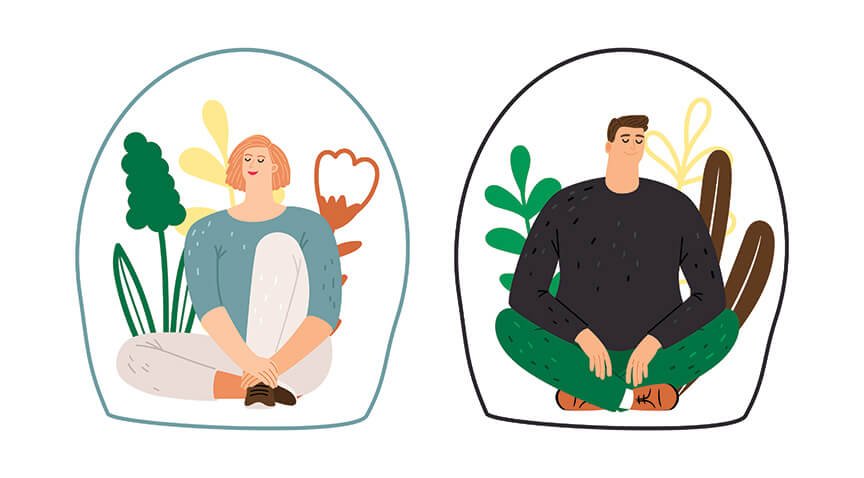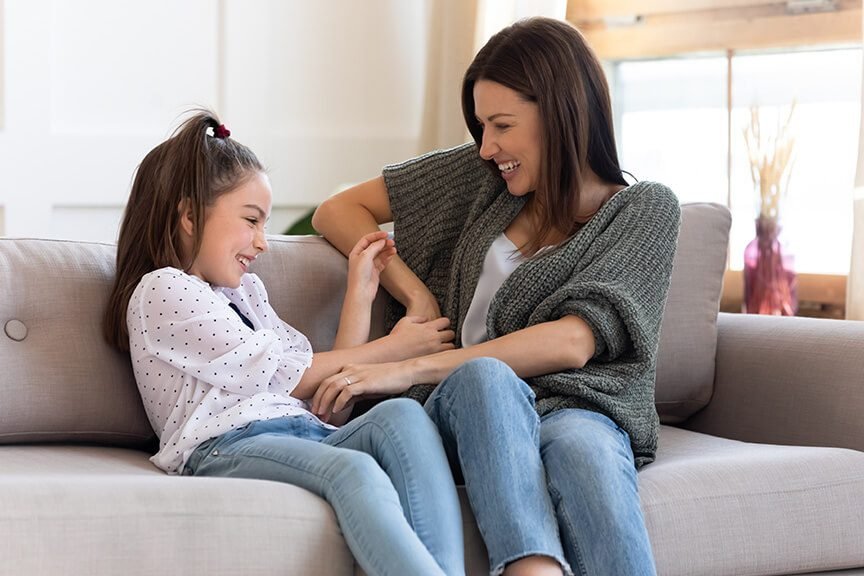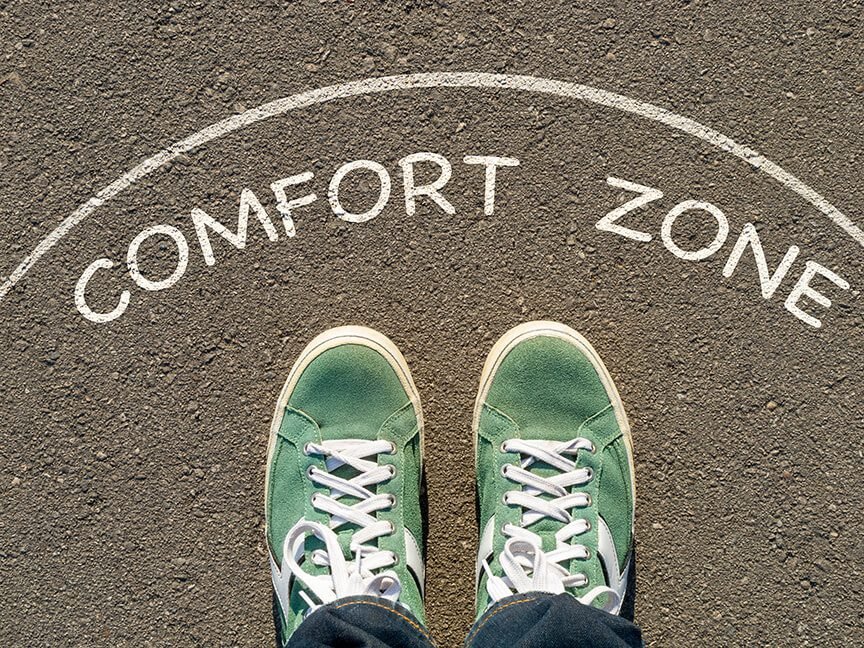If you’re new to the United States, it’s important to learn about personal space and the social customs around it. Here in America, personal space is very important. We like to keep our distance from other’s personal space when we’re in public, and there are specific rules that dictate how close someone can get. In this blog post, we will teach you about personal space in America and how to avoid uncomfortable social situations by understanding the rules.

What is Personal Space?
Personal space is the area around a person that they feel comfortable with other people entering, whether while they are standing or sitting down. Depending on the situation and personal preference, this area can be small or large. Generally speaking, personal space in America tends to be larger compared with other countries. In order to avoid uncomfortable social situations, it’s important to be aware of personal space and respect it when interacting with others.
Personal space can be defined as physical proximity to others and also on emotional level. While the two are very much related, in this blog we are going to be discussing the physical distances between people. As a new immigrant, it can help you avoid any social missteps and allow you to more quickly adapt to life in the U.S..
What is the Average Personal Space by Country?
The average personal space varies by country, with Americans typically preferring more personal space than other cultures. Generally speaking, personal space in the U.S. starts at four feet, while personal space in other countries is usually around two feet or less.
Personal space by country
- United States – 4 feet
- China – 2 feet
- India – 2 feet
- Japan – 1.5 feet
- Italy – 1 foot
- Germany – 3 feet
What Other Factors Affect Personal Space?
You may feel those average country numbers don’t reflect your personal space boundary. That’s because personal space boundaries can be impacted by a number of factors.
- Some people naturally have larger personal spaces than others, and this is often based on their level of comfort with strangers or other personal preferences.
- Additionally, personal space will vary when there are more people in the vicinity; a crowded room usually means that personal space boundaries are much smaller than when the room is empty.
- If you grew up in a large crowded city, your personal space has been affected by years of being surrounded by people. Conversely, if you grew up in the countryside, personal space can be much larger. This is especially true for children that are quicker adaptors to an environment.
How to Respect Other People's Personal Space?
When interacting with people in public, it’s important to be aware of personal space and respect it. Some tips for respecting personal space include:
- Avoid physical contact when introducing yourself to strangers, such as kissing on the cheeks (rarely done in the U.S.) or giving hugs.
- Shaking hands is common in the U.S. when being introduced in a formal setting. It’s not always done in informal introductions.
- Keep your distance when talking with others; generally speaking, personal space in the U.S. starts at four feet, so keep at least that much separation between you and the person you are interacting with.
- When in a crowded room, be aware of the personal space boundaries of those around you; try to keep at least two feet of personal space between yourself and others

How to Teach Personal Space to Children
When your children start school in the U.S. you’ll want them to understand ahead of time the concept of personal space. You want them to have the best chance to develop close friends and a healthy relationship with each of their classmates. Other children can be very vocal if they feel uncomfortable when their personal space is invaded.
Make a game out of learning personal space boundaries. For example, use a hula hoop or masking tape to create a personal boundary and then have your children practice keeping their distance from each other.
Also, talking about personal space in an age-appropriate way and helping them understand the concept of respect for others’ personal bubbles and why it is important can help your kids get into the right frame of mind.
You can also role-play personal space scenarios, such as two children talking together in a hallway and the distance they should keep between them. This will help your children understand personal space more deeply and give them the confidence to navigate potential social situations when they enter school.
What does it mean "When someone invades your personal space"?
If someone gets too close to people, whether they are a stranger or colleague, it is possible that they are invading another’s personal space. This can make the person feel uncomfortable or even threatened, depending on the circumstances.
It’s important to keep others’ personal space in mind when interacting, whether in a personal or professional setting.
How to See Personal Distance Nonverbal Cues from Others
When having a conversation with another personal, you can take nonverbal cues from them to get an idea how much physical space they need.
Watch for them to slightly back up to their preferred distance if they feel you are standing too close.
If you continue to close the distance, you’ll see them start to have negative reactions such as crossing their arms, breaking eye contact or shifting their feet.
These cues should be a sign that you need to give them more distance.
Additionally, watch what your body language is saying; leaning in too close during a conversation can make people feel their personal safety is being violated even if you are not physically touching them.
How to Handle Personal Space Issues?
If someone does invade your personal space, it’s best to let them know in a polite and respectful way that you would like more personal space. This will help keep everyone comfortable and show respect for the other person.

What is personal space in a relationship?
In relationships, personal space is the emotional and physical boundaries needed in order for both sides to feel safe and connected. Each person in the relationship may have different personal space needs, so it’s important to communicate your personal space needs and respect those of your partner.
Personal space can be shown through verbal communication or nonverbal body language, such as personal distance, eye contact and physical touch.
For example, if one partner is uncomfortable with public displays of affection, that may indicate they need more personal space than the other partner.
Your partner may want more “alone time” in the beginning of the relationship as they get to know you. Bear in mind that this doesn’t mean that they don’t want to spend quality time with you. They just want to keep some distance for the time being.
It is important to talk about these issues openly in order for both partners to feel seen and respected.
It Just Takes Time to Learn The Culture
Personal space is an important concept for immigrants to the U.S., to learn as they try to blend in. Mastering it can help you avoid uncomfortable and potentially dangerous situations. Start by teaching personal space rules to children, handling personal space issues with respect, paying attention to body language, and communicating your personal space needs.
Overall, personal space is an important part of any personal or professional relationship and should be respected by all involved. By understanding personal space in the U.S., new immigrants can avoid uncomfortable social situations and foster healthy, long-lasting relationships with those around them. With a bit of practice and communication, personal space issues can easily become second nature to any new immigrant!

